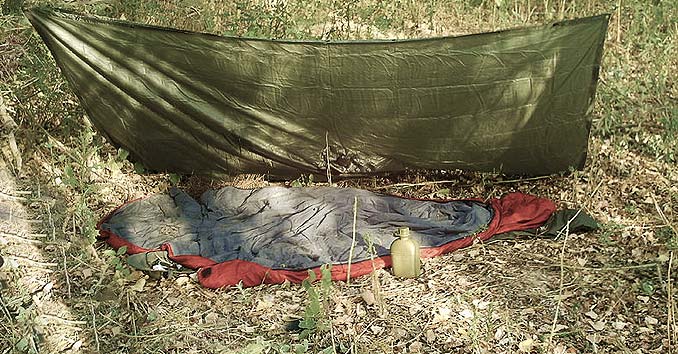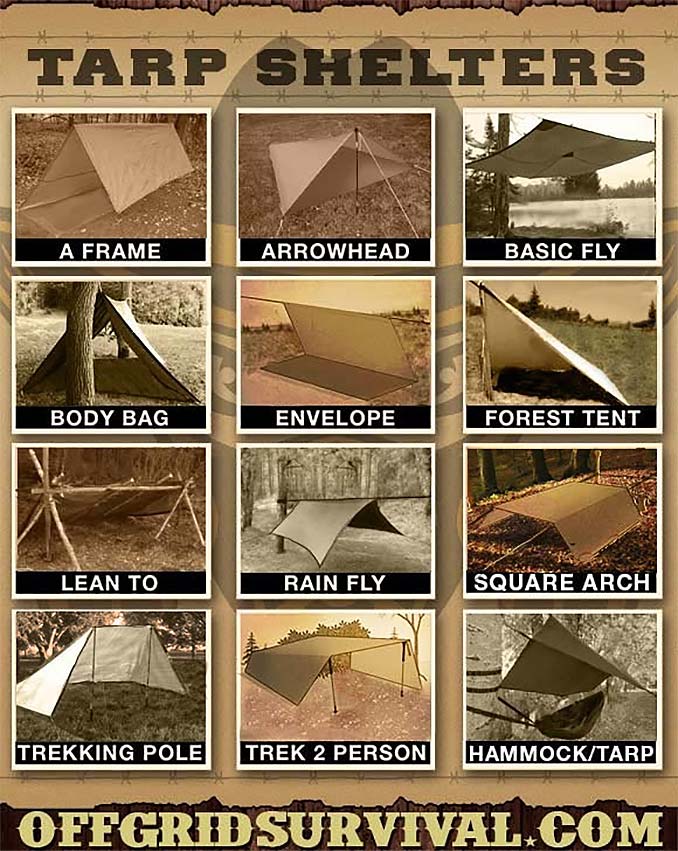
When it comes to surviving a prolonged wilderness related disaster, one of your primary concerns is going to be finding or building a shelter. That’s why whenever I am doing any type of backcountry adventuring, I always carry some sort of shelter equipment as part of my gear bag. Should something go wrong, having the ability to quickly set up a shelter can mean the difference between life and death!
What Type of Shelter Should You Carry; Tarp or Tent?
When I first started out, I would often carry a small tent system in my bag; but most of what’s out there is big, bulky, and doesn’t allow you to get the most out of your shelter. I wanted to be able to quickly deploy a shelter, and I wanted to be able to maximize its effectiveness depending on my unique environment or situation. A tent just wasn’t going to cut it.
So I ditched the tent; and instead, I decided to start carrying a Simple Tarp.

Why a Tarp is a Better Shelter Choice.
- When hiking and camping out in the backcountry, tarp tents allow you to feel even closer to nature. There’s nothing quite like sleeping under a tarp out in the middle of the wilderness; that is why we go out there, right?
- In most cases, a tarp is going to be lighter than any tent on the market. Switching to the tarp allowed me to cut down on my pack weight.
- It’s a dual purpose system. Unlike a tent, I can get more than one use out of the tarp. Besides the obvious shelter related uses, I can use the tarp as a raincoat; as part of a rain catchment system; as an improvised first-aid sling or bandage wrap; to make repairs on my clothing, backpacks, and other gear that may become damaged; or a hundred other uses that a tent just wasn’t able to handle.
But the main reasons I went with the tarp were because of how easily they could be set up and broken down, and how many different configurations I could get out of one.
Building Different Types of Tarp Shelter
With little more than a bit of paracord and a tarp, you can quickly set up an improvised shelter that will keep you warm and dry.

Tarp Add-ons and Must Haves
Usually, the only two things you need are the tarp and a bit of cordage. That being said, there are times where you may want to add a couple of accessories to your shelter system.
Depending on the environment I plan to be in, I can maximize the effectiveness of my shelter by adding a bivy sack, a reflective emergency blanket, and a mosquito/bug net.
Bivy Sacks: A bivouac sack (Bivy) was originally intended to serve as a waterproof cover for a sleeping bags, but over the years light hikers have adopted them as minimalist shelters and have even started using them as stand-alone sleeping bags.
Reflective Blankets: Usually weighing less than an ounce, space blankets are almost always a good add-on item to consider. Not only are they great for reflecting your own body heat during an emergency, but they can be worked into your tarp shelter to help reflect heat the heat from a small fire into your shelter.
Mosquito/Bug Net: If I’m traveling in an area with a lot of biting insects, especially mosquitos, then a good bug net is a must have.



Tarps are underrated but you need a bug net or bugspray. Like others say you can die from bug borne illness, speaking of which this “kissing bug” which has lived here for years now carries a germ.
I know I’m late to this party, but anyone made a canoe using a tarp? We had to in Mil.